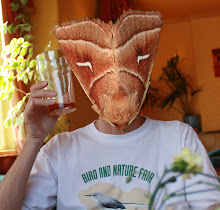Ahh, those Thick-knees...

Ever since I saw my first Stone Curlew way back who knows when I've had a thing about thick-knees, the birds that is. They are such prehistoric-looking and cryptic shorebirds - how could you not be moved by such creatures? There are only nine species scattered across the globe, two in the Americas, two in Australia, and the rest in Eurasia and Africa. They are often to be found in hot dry regions, though some are habitually tied to water, either on intertidal mud flats (Beach Thick-knee) or rivers and streams (Water and Great Thick-knees). For the arid-loving species the best way to find them is to drive around in the heat of the day and look for resting birds hiding from the sun under a flat-topped acacia.
The two birds above are Water Thick-knees. They are quite widespread throughout Africa south of the Sahara, though they only just creep into the very southern edge of Ethiopia, where this pair were photographed. Superficially similar to Senegal Thick-knee and Stone Curlew, it does have a distinctive white bar across the upper part of the grey wing panel that is bordered with black only on the upper edge.

The most distinctive species is the Spotted Thick-knee above. It differs from the rest by exhibiting a beautiful effect of barring and spotting on the mantle and wings and lacks the grey wing panel found on the other species. We were getting worried about this one but luckily found some roosting birds as we drove south towards Awash National Park.

The Senegal Thick-knee is perhaps the most widespread thick-knee in Ethiopia, though we didn't see too many. Not dissimilar to both Water Thick-knee and Stone Curlew, note that the grey wing panel shows just a single blackish bar across the upper edge with no white. This one was photographed near Lake Langano in the Rift Valley.

Finally the Stone Curlew or, as it is called these days, the Eurasian Thick-knee. This species is a winter migrant to Ethiopia and we found one roosting flock of about 15 birds passing the heat of the day under some acacias near the shore of Lake Abijatta in the Rift Valley. Again, rather similar to Senegal Thick-knee but the wing panel is less grey and more washed-out looking and has an obvious white bar across the top edge that is bordered with black on both sides. Also, thay are a bit shorter-legged and more chunky than the other species shown here.
Well, I hope you now have a vast appreciation of thick-knees and agree with me that they are indeed fascinating birds. Hmmm, what shall I tackle next...









.jpg)
1.jpg)

.jpg)


.jpg)

















